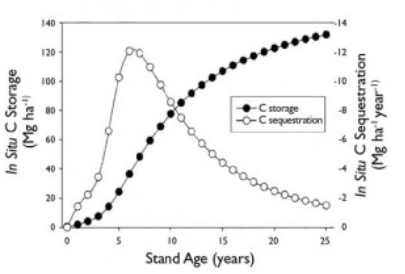Step 2 - Baseline scenario
The baseline scenario aims to estimate the current rate of carbon emission or carbon sequestration, this is, the rate of carbon emission or carbon sequestration prior to the Additional Activities. For this, we use carbon sequestration rates based on the current vegetation type and age. These rates vary for various forest and vegetation types and agricultural uses. For the referred estimations, we prefer to use the carbon emission factors in the available published literature, which should be at least obtained from similar localities or soil conditions.
The baseline can consist of two components: (i) the current rate of sequestration; and (ii) the current amount of carbon that is stored in the existing vegetation.
In the event project activities have started prior to calculating the baseline, the project needs to estimate the above-ground biomass using historical information about vegetation type and satellite imagery for estimating vegetation density.
The Coorest Sequestration Factor Database
The Coorest Sequestration Factor Database is a database that forms the backbone of Coorest’s methodology. Within this database, the following data will be stored:
Sequestration curves for various tree species and forest types;
Location;
Planting density;
Name of the species; and
Soil characteristics.
With these data, Coorest aims to develop a model that represents a general sequestration index (time vs. relative rate of carbon sequestration) in which Coorest can account for localities, soil type, and planting density. We estimate that we will need data from several tree species before we can make an accurate, useful, and valid model. The model will be based on nonlinear regression techniques.
The CSFD will contain sequestration factors for many different tree species, forest types, and agroforestry systems. These factors change over time as seen in Figure 1. The database will contain models that incorporate the age of the tree stand and its respective sequestration factor in order to provide a standardized, low-cost, and situation-specific solution to estimating carbon storage and sequestration.
Last updated
